The Homer IPTs
No Reasonable Offer Refused
I hate sailing with a less than full boat. If you would like to make a low-ball offer on one or more of the Bald Eagle IPTs below, please click here.
IPT #1: MON 20 FEB 2023 through the full day on FRI 24 FEB 2023. Five full days/20 hours on the boat: $5500.00. Limit 5 photographers/Openings: 1.
IPT #2: SAT 25 FEB 2023 through the full day on THURS 2 MAR 2023. Six full days/24 hours on the boat: $6600.00. Limit 5 photographers/Openings: 3.
IPT #3: FRI 3 MAR 2023 through the full day on TUES 7 MAR 2023. Five full days/20 hours on the boat: $5500.00. Limit 5 photographers. Openings: 1.
Rooms at Lands End Resort are available for all of the dates above.
What’s Up?
It had been cloudy every morning since I got back from San Diego. On Tuesday, it dawned clear and sunny. So on Wednesday, I peeked out the pool deck door, and saw the same. So, I headed down to the lake well before sunrise and was glad that I did. I realized that there might be a nice backlit situation at dawn. As you will see below, there were two. Afterwards I had some good chances on Cattle Egret, Savannah Sparrow, and Turkey Vulture.
In the On Understanding the Angle of Declination. Sweet Light blog post here, I judge the light to be a lot warmer in Image #2 than in Image #1. For me, Image #2 is best by far because of the more dynamic pose and the lower perspective. And yes, the sweeter light. I like the more out-of-focus background in Image #2. The angle of declination while standing was probably about 15°; while seated it was likely about 5°. Kudos to Galapagos 2023 registrant David Pugsley for his thoughtful and accurate comments.
In yesterday’s Brendan Burns’ blog post, 1, 3, and 5 garnered the most positive comments. I loved them all, but was alone in picking Image #7, the Great Blue Heron swallowing flatfish. Why? The bird is in fine feather, the perspective low, and the about-to-be-swallowed prey item is both amazing and perfectly positioned; you could not have painted it in a better spot. Thanks again to Brendan for allowing me to share his fine images with you here. His favorite is #1 because it of the difficulty of getting a symmetric shot like that with even underwing lighting (and few shadows).
I got lots accomplished on my 2022 taxes on Wednesday and will continue those efforts today.
Speaking of which, today is Thursday 2 February 2023. I continue to feel better and will almost surely get back in the pool this afternoon. At 7:00am, it was densely foggy so I am delaying heading down to the lake until it begins to brighten up a bit. This blog post took about 90 minutes to prepare and makes three hundred ten days in a row with a new, educational post. Wherever you are and whatever you are doing, I hope that you too have a great day.
Please, please, pretty please remember to use my B&H or Bedford’s affiliate programs for all your new gear purchases.
The plan is to continue to post every day until the streak reaches one year and one day and then go back to posting every other day.
Please remember to use the B&H and Amazon links that are found on most blog pages and to use the BIRDSASART discount code at checkout when purchasing your new gear from Bedfords to get 3% back on your credit card and enjoy free second-day air FedEx. Please, also, consider joining a BAA IPT. You will be amazed at how much you will learn!
You can find some great photo accessories (and necessities, like surf booties!) on Amazon by clicking on the Stuff tab on the orange/yellow menu bar above. On a related note, it would be extremely helpful if blog-folks who, like me, spend too much money on Amazon, would get in the habit of clicking on the Amazon logo link on the right side of each blog post when they shop online. As you might expect, doing so will not cost you a single penny, but would be appreciated tremendously by yours truly. And doing so, works seamlessly with your Amazon Prime account.
Please remember that if an item — a Delkin flash card, or a tripod head — for example, that is available from B&H and/or Bedfords, is also available in the BAA Online Store, it would be great, and greatly appreciated, if you would opt to purchase from us. We will match any price. Please remember also to use my B&H affiliate links or to earn 3% cash back at Bedfords by using the BIRDSASART discount code at checkout for your major gear purchases. Doing either often earns you free guides and/or discounts. And always earns my great appreciation.
|
|
|
This image was created on 1 February 2023 down by the lake near my home at Indian Lake Estates, FL. While seated on damp grass and mud along the edge of a canal, I used the lowered, no-longer available (except from BAA) Induro GIT 304L tripod/Levered-Clamp FlexShooter Pro-mounted Sony FE 600mm f/4 GM OSS lens and The One, the Sony Alpha 1 Mirrorless digital camera. ISO 400. Exposure was determined via Zebras with ISO on the rear dial: 1/1000 sec. at f/8 (stopped down two stops). RawDigger showed that the exposure was dead solid perfect plus a bit, just as I wanted it. AWB at 7:25:09am on a clear, soon-to-be sunny morning. Tracking: Expand Spot/AF-C was active at the moment of exposure and performed perfectly. Be sure to click on the image to enjoy the larger version. Image #1: Adult Bald Eagle in nest feeding chick |
Clear Sunrises Offer Color
I got down to the lake at about 7:00am. As I drove to the silhouette side of the eagle nest tree, I was glad to see a nice yellow/orange golden glow low in the eastern sky. I needed to get low in order to place the nest above the distant trees on the background, so I made my way down to the edge of the canal between the South Peninsula and the South Field. It was very muddy, so I grabbed an old lens bag from the trunk, sat on it, and went to work.
Starting with the bare lens at 600mm, the chicks were tiny in the frame. I knew that the only way to make a halfway decent image would be to make a photo that had the adult giving a tiny scrap of food to one of the chicks. The 30 fps of the a1 helped me succeed toward that end. I wound up with two decent ones, with Image #1 above being my favorite by a small margin.
Notice the perched songbird in the extreme upper left corner of the frame. I think that it might be a Northern Cardinal.
|
|
Image #1A: This is a 100% crop of the Adult Bald Eagle in nest feeding chick image |
The Hundred Percent Crop
This huge crop shows the incredible sharpness and image quality of sharp Sony A1 files. Please understand that this is a cropped version of Image #1.
|
|
|
This image was also created on 1 February 2023 down by the lake near my home at Indian Lake Estates, FL. Again, while seated on damp grass and mud along the edge of a canal, I used the lowered, no-longer available (except from BAA) Induro GIT 304L tripod/Levered-Clamp FlexShooter Pro-mounted Sony FE 600mm f/4 GM OSS lens with the Sony FE 1.4x Teleconverter, and The One, the Sony Alpha 1 Mirrorless Digital Camera.. ISO 400. The exposure was determined by Zebras with ISO on the rear wheel: 1/3200 second at f/8 (stopped down 1 stop) in Manual mode. RawDigger showed that the exposure was dead solid perfect plus a bit, just as I wanted it. AWB at 7::31:05am on a clear, soon-to-be sunny morning. Tracking: Spot S/AF-C with Bird-Eye/Face Detection performed perfectly. Click on the image to enjoy the high-res version. Image #2: Bald Eagle — adult jumping out of nest after feeding chicks |
Dealing With the Sun Moving in the Frame
As the sun rose, it seemed to move to the south, that a result of the earth’s rotation. Each time it would peek into the frame, I needed to move to the north, to my left, and take my butt protection with me. After adding the 1.4X teleconverter, I shot some horizontals before rotating the lens in the tripod collar. At this point, I was hoping for some sort of action, perhaps the second adult flying into the nest. The higher the sun got in the sky, the more light I had to work with. I kept raising the shutter speed so that I had Zebras on most but not all of the sky. That resulted in parts of the sky showing as over-exposed in RawDigger, but those areas were easily dealt with during the raw conversion.
When the adult decided that breakfast was over it jumped up to the perch on our right of the nest. I followed my own advice and pressed the shutter button when the unexpected action occurred. Image #2 was the best from that 8-frame sequence by a very small margin. I had two goals and was pleased that I accomplished both of them!
Note: the head of the eaglet on our right was facing away at the moment of exposure. So, I painted a Quick Mask of the other large chick’s head, moved it into place, and transformed and warped it a bit so that my craftiness would not be easily detected. Though the sky color was a perfect match, I had to add a Regular Layer Mask to erase a tiny bit of the new neck.
Your Call?
Which of today’s two featured images is the strongest? Why. I think that the choice may be more difficult than it seems at first glance.
I am hoping that the two young eagles begin branching (leaving the nest to exercise their wings on nearby perches) before I head first to Florida’s west coast on 13 February and then fly to Anchorage, AK on the 18th for the Homer Bald Eagle IPTs. Learn about photographing at Indian Lake Estates and other great central Florida locations in the BAA Middle of Florida Photographic Site Guide.
|
|
|
Fort DeSoto in spring is rife with tame birds, many in full breeding plumage. Click on the composite to enjoy a larger version. Clockwise from upper left around to center: Laughing Gull landing on head of Brown Pelican, Laughing Gull in flight, Reddish Egret sunrise silhouette, Great Blue Heron with needlefish, Yellow-crowned Night Heron with ghost crab, Roseate Spoonbill, Sanderling in breeding plumage, and white morph Reddish Egret in glorious breeding plumage. |
The 2023 Spring Fort DeSoto Instructional Photo Tours (IPTs)
Spring Fort DeSoto IPT #1: Tuesday 28 March through the morning session on 31 March 2023. 3 1/2 Days: $1899.00 includes three working brunches. Limit six photographers.
Spring Fort DeSoto IPT #2: Tuesday 11 April through the morning session on 14 April 2023. 3 1/2 Days: $1899.00 includes three working brunches. Limit six photographers.
Spring Fort DeSoto IPT #3: Tuesday 9 May through the morning session on 12 May 2023. 3 1/2 Days: $1899.00 includes three working brunches. Limit six photographers/Openings 5.
Fort DeSoto, located just south of St. Petersburg, FL, is a mecca for terns and gulls, wading birds, and shorebirds in spring. Many of the birds will be in full breeding plumage. Simply put, DeSoto is the new Ding Darling. Migrant shorebirds are in abundance, and many are exceedingly tame. We should have great chances on Royal and Sandwich Terns and both white- and dark-morph Reddish Egrets. Great Egret, Snowy Egret, Great Blue Heron, Tricolored Heron, and White Ibis are easy as well and we will almost surely come up with a tame Yellow-crowned Night-Heron or two along with some American Oystercatchers. We will enjoy lots of great flight photography, especially with the Brown Pelicans.
|
|
|
Again, Fort DeSoto in spring is rife with tame birds, most in breeding plumage. Click on the composite to enjoy a larger version. Clockwise from upper left around to center: Laughing Gull in flight, Yellow-crowned Night-Heron, Sandwich Terns copulating, Roseate Spoonbill, Great Egret with reflection, breeding plumage Short-billed Dowitcher, American Oystercatcher, Royal Tern, white morph Reddish Egret, and Snowy Egret in marsh. |
In Addition!
We should also get to photograph a variety of other shorebirds including Black-bellied, Semipalmated, Wilson’s, Snowy, and Piping Plovers, Willet, Dunlin, Short-billed Dowitcher, Marbled Godwit, and most especially, Red Knot, with many individuals in their handsome breeding plumages. In spring the T-shaped peninsula and the newly formed sandbar, Outback Key, are literally packed with avian treasures.
With just a bit of luck, we may get to photograph one of Florida’s most desirable species: Roseate Spoonbill. And we will surely get to do some Brown Pelican flight photography. With luck, they will have Laughing Gulls landing on their heads. And though not guaranteed, Wood Stork might well be expected. And we will be on the lookout for a migrant passerine fallout in the event of a thunderstorm or two.
|
|
|
Yes, Fort DeSoto in spring is rife with tame birds, most in breeding plumage. Click on the composite to enjoy a larger version. Clockwise from upper left around to center: breeding plumage Dunlin, dark morph Reddish Egret displaying, Laughing Gull vertical front-end portrait, Laughing Gull with prey item, landing on head of Brown Pelican, breeding plumage Royal Tern displaying, Royal Terns — pre-copulatory stance, Laughing Gulls copulating, Laughing Gull head portrait, breeding plumage Sandwich Tern with fish, and a rare treat, a breeding plumage White-rumped Sandpiper. |
What You Will Learn on a DeSoto IPT
- 1- The basics and fine points of digital exposure; how to get the right exposure every time after making a single test exposure (or before if you are using SONY gear).
- 2- How and why to work in Manual mode (even if you’re scared of it).
- 3- How to approach free and wild birds without disturbing them.
- 4- Lots about bird behavior and how to use that knowledge to help you create better images.
- 5- To age and identify many species of shorebirds including various sandpipers, plovers, dowitchers, and possibly yellowlegs.
- 6- To spot good situations and to choose the best perspective.
- 7- To see, evaluate, and understand the light.
- 8- To design pleasing images by mastering your camera’s AF system.
- 9- And perhaps most importantly, to evaluate wind and sky conditions and understand how they affect bird photography.
- 10- More than you could ever imagine.
|
|
|
You’ve got it by now! Fort DeSoto in spring is rife with tame birds, many in breeding plumage. Click on the composite to enjoy a larger version. Clockwise from upper left around to center: Roseate Spoonbill, immature Brown Pelican in flight, the heron/egret hybrid, American Oystercatcher feeding, immature Royal Tern on railing, Great Egret morning silhouette, Black Skimmer in surf, and underside head portrait of Great Blue Heron. |
The Details
Morning sessions will run two and one-half to three hours; afternoon sessions about two. There is never a set schedule on an IPT — we adapt to the conditions. On cloudy mornings with the right wind, we may opt to photograph till noon and skip the afternoon session. That especially when the afternoon weather is looking iffy. We may opt to visit a great North Tampa rookery if conditions warrant that.
There will be a Photoshop/Image Review session before and after brunch (included) each of the three full days. That will be followed by Instructor Nap Time. Each of these IPTs will run with only a single registrant as I do not like disappointing anyone. The best airport is Tampa (TPA). Once you register, you will receive an e-mail with lodging information. Do know that it is always best if IPT folks stay in the same general area (rather than at home or at a friend’s place a good distance away).
Folks attending this IPT will be out in the field as early as possible and stay out late to take advantage of sunrise and sunset colors; this is pretty much a staple on almost all BIRDS AS ART Instructional Photo-Tours. Doing so will often present unique photographic opportunities, opportunities that will be missed by those who need their beauty rest and those who need to get home for a proper dinner. I really love it when I am leaving the beach at 9:30am on a sunny morning after a great session just as a carful or two of well-rested photographers are arriving … We will be getting wet.
Your $599 deposit is due now. Credit cards are OK for that. You can register by calling Jim or Jennifer during weekday business hours at 863-692-0906 with a credit card in hand. Once you leave a deposit, you will receive an e-mail with your balance statement and instructions for sending your balance check three months before the trip begins. If you wish to pay in full right off the bat, you can make your check out to BIRDS AS ART and send it via US mail here: BIRDS AS ART, PO BOX 7245, Indian Lake Estates, FL 33855. You will receive a confirmation e-mail with detailed instructions, and clothing and gear advice two months before the trip. Please shoot me an e-mail if you plan to register or if you have any questions.
IPT veterans and couples or friends signing up together may e-mail for discount information.
|
|
|
Click on the image to better see the green eye-AF boxes in action. Sony Alpha 1 Flight Photography AF Points! |
The SONY Alpha a1 Set-up Guide and Info Group: $150.00 (or Free)
The SONY Alpha a1 Set-up Guide and Info Group is going great guns as more and more folks chime in with thoughtful questions and experience-based answers. As the a1 is becoming more readily available, more and more folks are getting their hands on this amazing body. By June 1, 2022, the group was up to an astounding 124 lucky and blessed folks. (More than a few folks own two or more a1 bodies! Early on, we discussed the myriad AF options. I gave my opinion as to the best one for flight and general bird photography. The best news is that everyone in the group receives an e-mail that includes a .DAT file with my a1 settings on it, and explicit directions on how to load my settings onto your a1; talk about convenience! I am now offering a .DAT file compatible with firmware update 1.20. Your entry into the group includes a consolidated Sony a1 CAMSETA2 INFO & GUIDE. New a1 folks will now receive six e-mails instead of the previous 28! You will receive new e-mails as they are published. Simply put, this e-mail guide is an incredible resource for anyone with an a1.
All who purchased their Alpha 1 bodies via a BAA affiliate link — B&H or Bedfords — will receive a free Sony Alpha a1 Set-Up Guide and free entry into the Info Updates group after shooting me their receipts via e-mail. (Note: it may take me several days to confirm B&H orders.). Others can purchase their guide here in the BAA Online Store.
Typos
With all blog posts, feel free to e-mail or to leave a comment regarding any typos or errors.

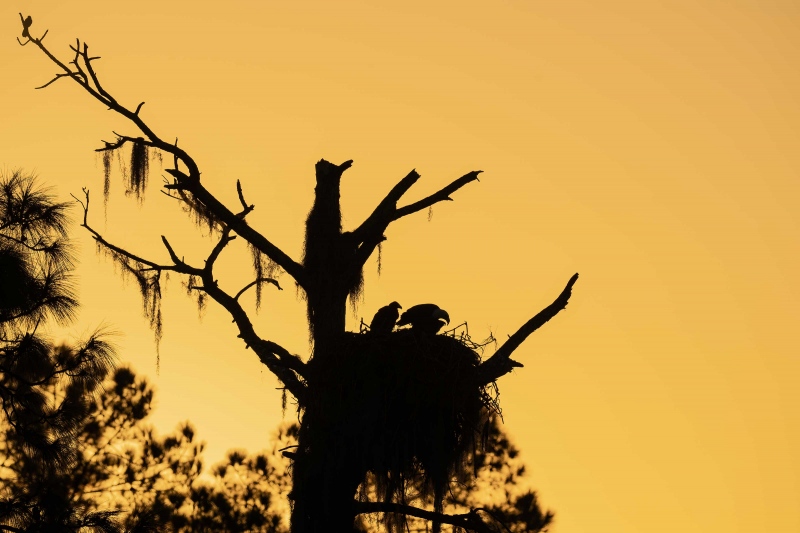
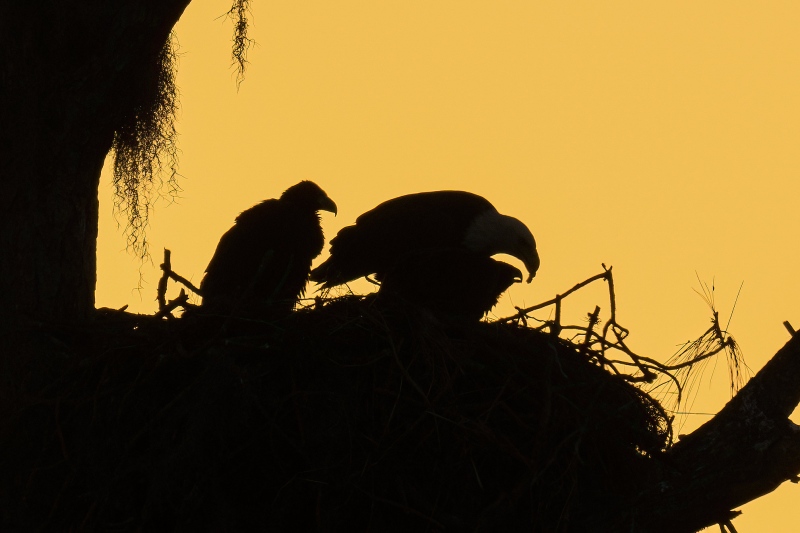
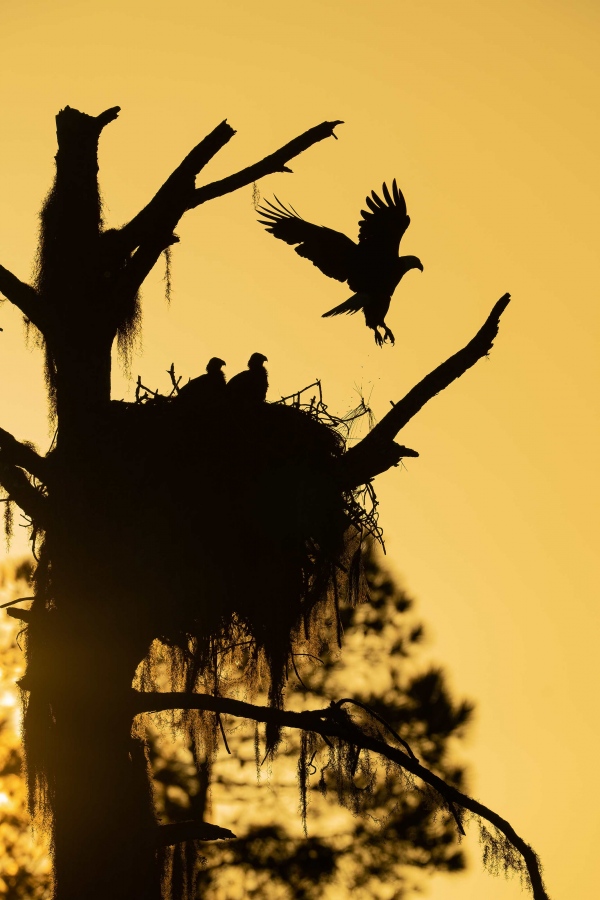
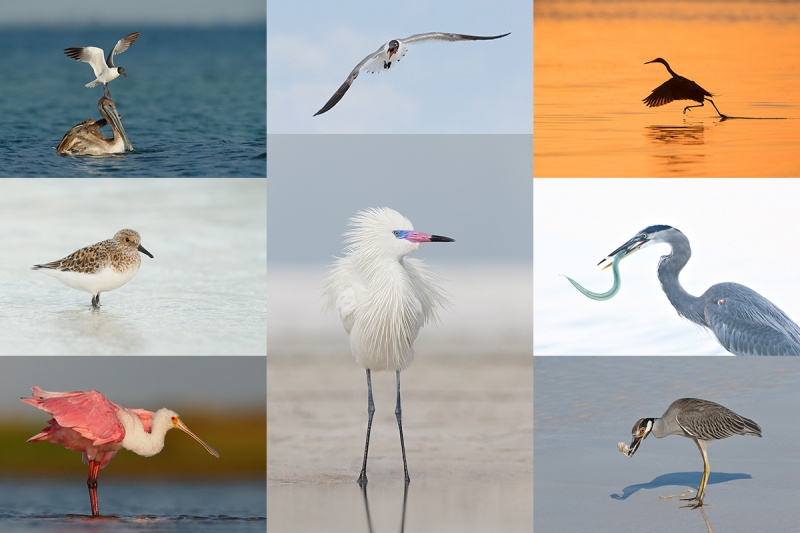
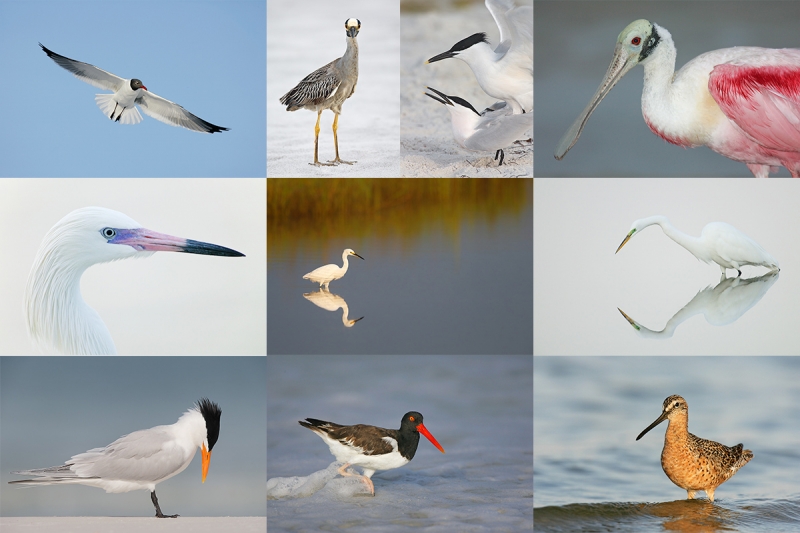
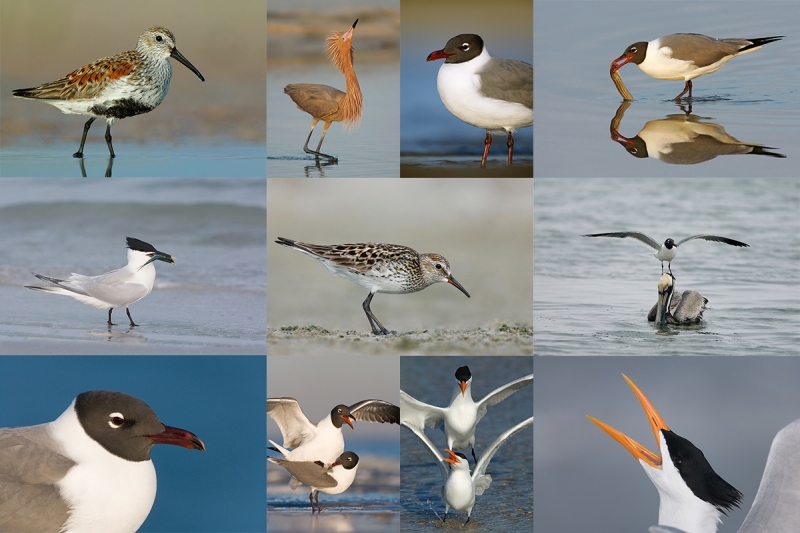
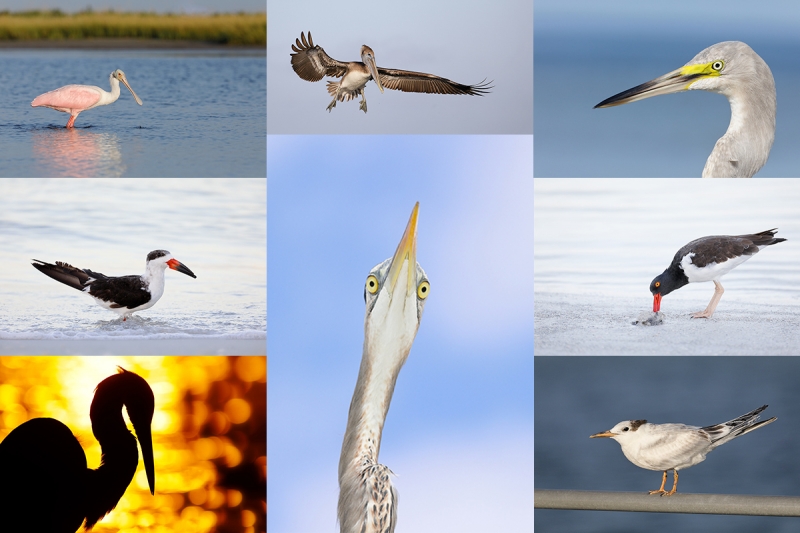
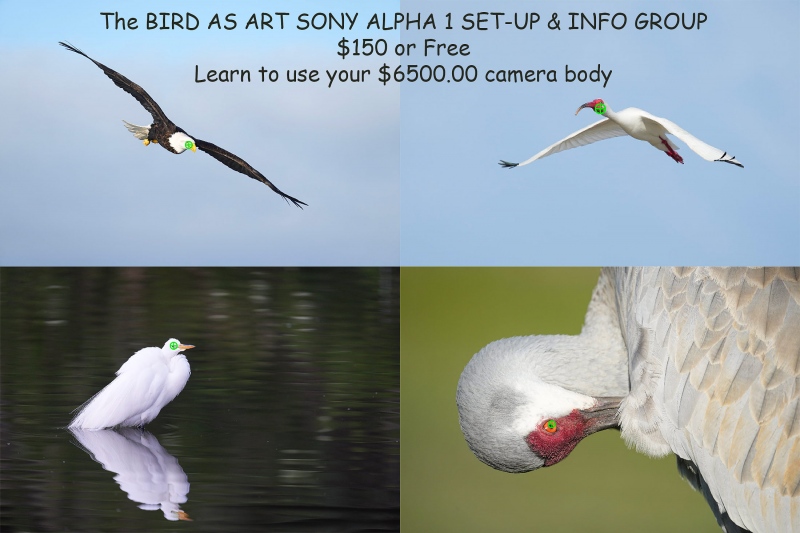













Images #1 and #1A and #2 are too dark to well see the Bald Eagles.
Hi Sue,
The brightness of the two eagle images is just as I wanted it. A silhouette is the image of a person, animal, object or scene represented as a solid shape of a single color, usually black, with its edges matching the outline of the subject. The interior of a silhouette is featureless.
The word was satirically derived from the name of the parsimonious mid-18th-century French finance minister Étienne de Silhouette, whose hobby was the cutting of paper shadow portraits (the phrase à la Silhouette grew to mean “on the cheap”).
artie
Image #2 is my pick!
I like the vertical image of the tree and nest, I like how the eaglets have their heads raised and looking towards the parent bird, and I liked how the adult bird is positioned between the two branches. A great image!
Thank you kind sir.
with love, artie
Artie: if you’re looking toward the rising sun, you’re facing east. As the sun moves toward the south, you want to keep in in or near the frame, so you move north, which is to your left, not to your right, as you said. South is to your right.
I prefer image #2.
Thanks, David. That’s what I meant 🙂 It is fixed.
with love, artie